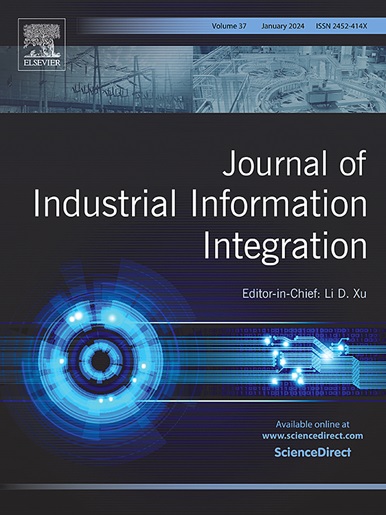Data center multidimensional management strategy based on descending neighborhood DBSCAN algorithm in unsupervised learning
IF 10.4
1区 计算机科学
Q1 COMPUTER SCIENCE, INTERDISCIPLINARY APPLICATIONS
引用次数: 0
Abstract
Cloud users rent virtual machines (VMs) with varying parameters tailored to their unique business requirements. These diverse VM parameters add complexity to data center (DC) management strategies. Among the crucial parameters are CPU and memory, which must be optimized to ensure efficient physical resource utilization and decreased DC energy consumption. This article proposes three algorithms to manage and optimize VMs. Firstly, the density-based spatial clustering of applications with noise (DBSCAN) algorithm is enhanced, leading to the introduction of the descending neighborhood DBSCAN (DNDBSCAN) algorithm. This algorithm facilitates the clustering of physical machines (PMs). Secondly, the cluster center nearest classification algorithm (CCN) is proposed, leveraging VM attributes and the remaining capacity of the cluster center to classify the VMs for deployment. Additionally, the avoid hot spot time correlation algorithm (AHTC) is introduced to handle VM mapping, deploying VMs on the most time-relevant PMs while mitigating hot spots. Lastly, these three algorithms are integrated into a DC multidimensional management strategy based on the DNDBSCAN algorithm within the framework of unsupervised learning (DND). When compared to other algorithms, the DND algorithm demonstrates significant improvement in PM balanced utilization and reduction of DC energy consumption. The average balanced utilization of PM of the DND algorithm is 86 %, which is an average improvement of 11 % compared to the comparative algorithm. The average total energy consumption of the DND algorithm is 124 kW•h, which is an average reduction of 41 % compared to the comparative algorithm.
求助全文
约1分钟内获得全文
求助全文
来源期刊

Journal of Industrial Information Integration
Decision Sciences-Information Systems and Management
CiteScore
22.30
自引率
13.40%
发文量
100
期刊介绍:
The Journal of Industrial Information Integration focuses on the industry's transition towards industrial integration and informatization, covering not only hardware and software but also information integration. It serves as a platform for promoting advances in industrial information integration, addressing challenges, issues, and solutions in an interdisciplinary forum for researchers, practitioners, and policy makers.
The Journal of Industrial Information Integration welcomes papers on foundational, technical, and practical aspects of industrial information integration, emphasizing the complex and cross-disciplinary topics that arise in industrial integration. Techniques from mathematical science, computer science, computer engineering, electrical and electronic engineering, manufacturing engineering, and engineering management are crucial in this context.
 求助内容:
求助内容: 应助结果提醒方式:
应助结果提醒方式:


